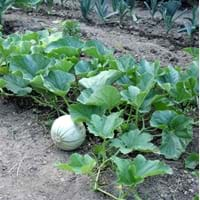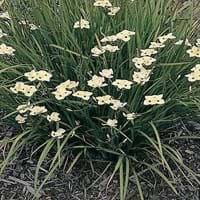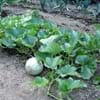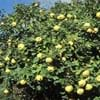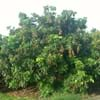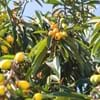Life Span
Annual
Perennial
Type
Fruit
Tender Perennial
Origin
Hybrid origin, Africa
Southern Africa
Types
Not Available
Not Available
Habitat
along watercourse, Banks, Barren waste areas
Desert, Mediterranean region, Subtropical climates, Temperate Regions
USDA Hardiness Zone
Not Available
8-10
Sunset Zone
2a, 2b, 3a, 3b, 4, 5, 6, 7, 8, 9, 10, 11, 12, 13, 14, 15, 16, 17, 18, 19, 20, 21, 22, 23, 24
H1, H2, 8, 9, 12, 13, 14, 15, 16, 17, 18, 19, 20, 21, 22, 23, 24
Habit
Prostrate/Trailing
Clump-Forming
Flower Color
Yellow
Yellow, Light Yellow, Brown
Flower Color Modifier
Bicolor
Bicolor
Fruit Color
Green, Yellow green
Green, Brown
Leaf Color in Spring
Green
Green, Gray Green
Leaf Color in Summer
Green
Green, Gray Green
Leaf Color in Fall
Green, Yellow green
Green, Gray Green
Leaf Color in Winter
Light Green
Light Green
Leaf Shape
Heart-shaped
Grass like
Plant Season
Summer, Fall
Spring, Summer, Fall, Winter
Sunlight
Full Sun
Full Sun, Partial Sun, Partial shade
Growth Rate
Very Fast
Medium
Type of Soil
Loam
Clay, Loam, Sand
The pH of Soil
Neutral
Acidic, Neutral, Alkaline
Soil Drainage
Well drained
Average
Bloom Time
Early Summer, Summer, Indeterminate
Indeterminate
Tolerances
Drought
Drought
Where to Plant?
Ground
Container, Ground, Pot
How to Plant?
Seedlings
Rhizome division, Seedlings
Plant Maintenance
Medium
Medium
Watering Requirements
Reduce watering once fruit are growing, Water in the early morning hours
Requires regular watering
In Summer
Lots of watering
Lots of watering
In Spring
Moderate
Moderate
In Winter
Average Water
Average Water
Soil pH
Neutral
Acidic, Neutral, Alkaline
Soil Type
Loam
Clay, Loam, Sand
Soil Drainage Capacity
Well drained
Average
Sun Exposure
Full Sun
Full Sun, Partial Sun, Partial shade
Pruning
Remove damaged leaves, Remove dead branches, Remove dead leaves
Remove dead leaves
Fertilizers
All-Purpose Liquid Fertilizer
Any balanced general purpose fertilizer
Pests and Diseases
Aphids, Cucumber beetles, Fusarium wilt
Nematodes, Scale
Plant Tolerance
Drought
Drought
Flower Petal Number
Single
Single
Foliage Texture
Coarse
Medium
Foliage Sheen
Matte
Matte
Attracts
Ants
Bees, Birds, Butterflies
Allergy
Dizziness, Mouth itching, Nausea
Skin irritation
Aesthetic Uses
Not Used For Aesthetic Purpose
Showy Purposes
Beauty Benefits
Good for skin, Hair Conditioner, Stops hair loss
Not Available
Environmental Uses
Air purification
Ethnobotanic
Medicinal Uses
Antitussive, Digestive, Diuretic, Emetic, Febrifuge, Stomachic
No Medicinal Use
Part of Plant Used
Fruits, Seeds
Root
Other Uses
For making oil for cosmetics
Roots were worn to protect and strengthen the wearer, Used as Ornamental plant
Used As Indoor Plant
No
No
Used As Outdoor Plant
Yes
Yes
Garden Design
Edible, Fruit / Fruit Tree, Herb / Vegetable, Vine
Bog Garden, Container, Feature Plant, Mixed Border, Tropical, Water Gardens
Botanical Name
CUCUMIS melo 'Burpees Early Hybrid'
DIETES bicolor
Common Name
Crenshaw Melon
African iris, Fortnight lily
In Hindi
खरबूजा
African Iris
In German
Zuckermelone
Afrikanische Iris
In French
Melon
African Iris
In Spanish
Crenshaw Melon
Iris africano
In Greek
Crenshaw Melon
Αφρικανική Iris
In Portuguese
Crenshaw Melon
Iris africano
In Polish
Crenshaw Melon
Afryki Iris
In Latin
Crenshaw Melon
African Iris
Phylum
Magnoliophyta
Magnoliophyta
Class
Magnoliopsida
Magnoliopsida
Order
Cucurbitales
Asparagales
Family
Cucurbitaceae
Iridaceae
Clade
Angiosperms, Eudicots, Rosids
Angiosperms, Monocots
Tribe
Not Available
Irideae
Subfamily
Not Available
Iridoideae
Number of Species
Not Available
Not Available
Importance of Crenshaw Melon and African Iris
Want to have the most appropriate plant for your garden? You might want to know the importance of Crenshaw Melon and African Iris. Basically, these two plants vary in many aspects. Compare Crenshaw Melon and African Iris as they differ in many characteristics such as their life, care, benefits, facts, etc. Every gardener must at least have the slightest clue about the plants he wants to plant in his garden. Compare their benefits, which differ in many ways like facts and uses. The medicinal use of Crenshaw Melon is Antitussive, Digestive, Diuretic, Emetic, Febrifuge and Stomachic whereas of African Iris is No Medicinal Use. Crenshaw Melon has beauty benefits as follows: Good for skin, Hair Conditioner and Stops hair loss while African Iris has beauty benefits as follows: Good for skin, Hair Conditioner and Stops hair loss.
Compare Facts of Crenshaw Melon vs African Iris
How to choose the best garden plant for your garden depending upon its facts? Here garden plant comparison will help you to solve this query. Compare the facts of Crenshaw Melon vs African Iris and know which one to choose. As garden plants have benefits and other uses, allergy is also a major drawback of plants for some people. Allergic reactions of Crenshaw Melon are Dizziness, Mouth itching and Nausea whereas of African Iris have Skin irritation respectively. Having a fruit bearing plant in your garden can be a plus point of your garden. Crenshaw Melon has showy fruits and African Iris has no showy fruits. Also Crenshaw Melon is not flowering and African Iris is not flowering . You can compare Crenshaw Melon and African Iris facts and facts of other plants too.
